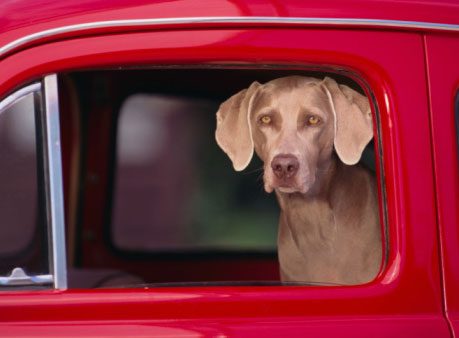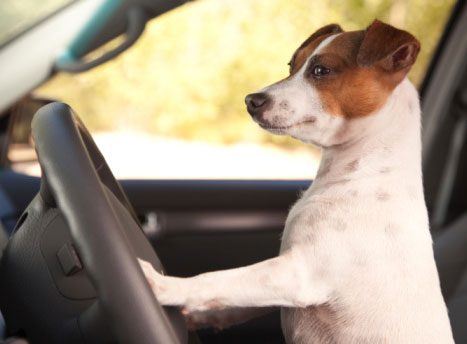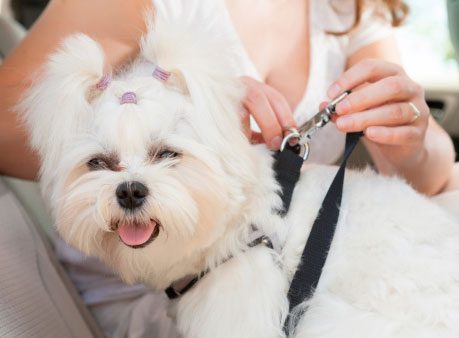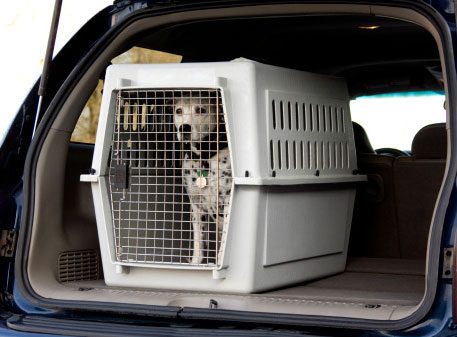
When Humans and Dogs Collide
A car traveling at 30 mph can send a 60-pound dog (such as a medium-sized Boxer or a smaller Labrador Retriever) crashing into the windshield, seat, or another passenger with an impact of 2,700 pounds. The risks, of course, increase at higher travel speeds.
“Few people understand that a 27 kilogram dog becomes more than 1.2 tonnes of mass in a vehicle travelling at just 55 km/h,” said Christina Selter, founder of Bark Buckle UP, a pet safety advocacy group based in San Diego, Calif. “In a frontal collision, an unrestrained pet can become a serious safety hazard. Things can get even worse for emergency responders who are the first on the scene of a collision. An unrestrained dog can be a danger to them and, if loose, can cause other vehicles to collide on the road.”
Selter’s campaign has been so well received that Bark Buckle UP is expanding into Canada.

Dogs are Distracting
Additional dangers posed by unrestrained animals include distracting the driver, or escaping the vehicle and causing a collision on the road. In addition, keep in mind that if the driver is perceived to be in danger after an accident, a protective dog might fend off would-be rescuers.
While there are no specific stats for Canadian traveling with their dogs, Statistics Canada did report that in 2006 there were over 144,000 car accidents and over 159,000 injuries. The Travel Industry Association reports 29.1 million U.S. adults have traveled with a pet, with 67 per cent of that number travelling by car or truck.

Car Companies Are Responding
Car companies are even getting into the pet travel trend. Volvo offers an optional, factory-installed cage. Subaru has a gate preventing pets from entering the main passenger area, and Saab has a metal cargo guard in some car models. Eager to follow the trend, the auto insurance industry now offers policies for pets.

Buckle up!
Many pet restraints are available for purchase, from harnesses to car seats, safety belts, and fencing. Some carriers are even temperature-controlled for traveling in extreme climates.
A popular option for small pets is the Sleepypod: a pet bed that combines a bed and travel carrier. It can be strapped into a car seat or used on airplanes. For larger dogs, try Kurgo’s safety harness.
Looking to buy domestic? Seatbelts for Dogs is a popular Canadian pet car restraint company.

7 Tips for Taking Dogs on Road Trips
Once you have your seating arrangements covered, here are some other tips to consider before hitting the road:
- Make sure your pet is well groomed (not itchy or dirty).
- Take along some comforts of home – bed, blanket, toys, litter box.
- Rather than buying new types of food, carry your pet’s familiar food from home when practical.
- Have a pet first aid kit for emergencies.
- Don’t let your dog hang its head outside of the window. Flying particles of dirt can injure its eyes and nose while excessive amounts of cold air can injure the lungs.
- Never leave your pet in the car. In the summer your car heats up into a death-trap sooner that you think, despite leaving the windows open and parking in a shady spot. In winter, plummeting temperatures can cause your dog to freeze.
- Dogs can can suffer from motion-sickness. Consult your vet for further advice.